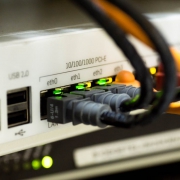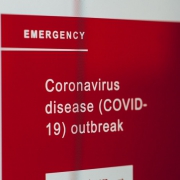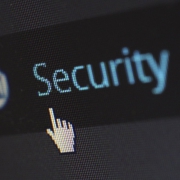In the past, I have talked about the Mobile Security Threats that You NEED to Know About and I also shared some tips on What You Can Do to Avoid Mobile Security Threats?
For this blog post, I will focus on the most common network security threats. Let’s all face it; the Internet connects us in a convenient way, breaking geographical boundaries. However, it also brings us closer to various threats.
Like most companies, your business probably manages loads of data on a daily basis. According to the 2017 Cost of Data Breach Study: Global Overview, data breach could happen in 1 out of 4 companies. You could be the next victim!
In 2017, the average cost of a data breach is $3.62 million. With the advancements in technology, it is safe to say the costs keep getting higher and higher each year. The good news is that you can do something to prevent data breach.
Network Security Threats
First, let us discuss the network security threats your company face. Here are the most common threats:
- Spyware
- Adware
- Malware
- Trojan horses
- Viruses
- Phishing
- Wi-Fi attacks
- Denial of service attacks
Now that you know the numerous network security threats, the question is… how do you protect your business data?
4 Tips in Protect Your Company
These are the 4 ways you can improve on your company’s overall network security.
-
Strengthen the Access Control
- Outsiders can access your data because of weak security. Therefore, strengthen the control measures by applying strong passwords.
- Follow the basic password guidelines such using a combination of letters, numbers, and special characters. Next, passwords should not be as short as possible. In fact, the longer, the better.
- Lastly, never use default passwords. Reset them so that you can create a unique password instead.
-
Remember to Update Your Software
- Updates are important to your network’s health. That is why people can access your network because of its outdated state. So, keep everything current from your antivirus to your operating systems.
- The updates are there to fix the previous issues such as potential vulnerability. So, embrace these updates to maintain a secure wall of defense.
-
Set a Uniform Software
- Your company should use one standard tool to isolate attack. What I mean here is that your employees should not use any browser they like. For instance, computers are installed with Firefox plus some privacy add-ons. Then, here goes one employee installing Chrome without approval. This cannot be!
- Make sure the computers all have the same: operating system, web browser, extensions, multimedia player, and so on.
-
Conduct an Employee Training
- External threats can happen because of an internal flaw. An employee could have indirectly given away or hinted a password. So, make sure your employees understand the fundamentals of network security.
- All of them should know what is risky (and what is not) to your network. This is to avoid unnecessarily comprising the security protocol. Give a security training at least once a year to keep your employees updated about the recent trends.
A Dependable Company for Your Cybersecurity Needs
There are team of experts willing to help you have the proper network security. For all your I.T. needs, Omnipotech is the name you can trust. Contact Omnipotech Support Center now to learn more about the cybersecurity solutions that we provide. The number to call is 281-768-4800!






